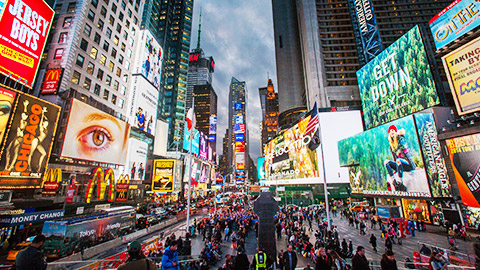Advertising, public relations, and media are subsets of marketing communications; yet the name “advertising industry” in its own has owned the headlines since the invention of modern marketing in the 50’s. Nowadays there’s even the digital advertising industry.

To measure the size of the industry normally the ad spend amount per geography is used. In Australia the ad spend market was worth AUD 16.43bn in 2019, AUD 14.29bn in 2020, and AUD 15.59bn in 2021.
E-commerce and online video markets are the fastest growing areas, with digital advertising in these areas equating to 58 per cent of the total. According to IBIS World, an expert industry market research organisation based in Melbourne, there are in Australia 8,975 advertising agencies and 4,117 digital advertising agencies.1
There are normally various types of agencies, some industry specific, e.g. pharmaceutical; or target audience specific (Chinese audiences), or even medium specific (Web 3 and metaverse).
The following are the typical categories differentiating agencies:
- Full-service agency - offers every option possible, from campaign management, advertising, social media management, content creation (radio, print, etc), strategic planning, and search engine work.
- Digital agency - is more focused, they do not offer traditional mediums, e.g., print, TV, radio. They focus on web design, email marketing, content marketing, social media marketing and search engine marketing and optimisation.
- Traditional - will focus on “Above the level” mediums, e.g., TV, radio, newspapers, magazines, billboards, etc.
- Social media agencies - focus on content and advertising creation and normally cover all platforms, from LinkedIn, Facebook, Instagram, to Tik Tok.
- Creative agency - focuses mainly on content, whether video, graphic design, copy writing; they tend to be used by companies that already look after the media component but only need creative content.
- Media - as the pocket where most of the spend goes are organisations focusing on the placing of content, traditional or digital, this is mainly about data instead of creative work.
Other types of agency worth mentioning include CRM, experiential marketing, PR, and market research agencies.
In the world of advertising some agency groups dominate the world landscape including Australia. The big four (in reference to the world’s top groups) are WPP based in London, Publicis headquartered in Paris, IPG in New York, and Omnicom also in New York, some of the most classic agencies are part of these groups, including Ogilvy and Thompson in WPP, BBDO and TWA (the agency in charge of Apple) as part of Omnicom, McCann Erickson as part of Interpublic; and Saatchi or Leo Burnett as part of Publicis. Click the following link to access the family tree published by R3 in 2021, where 12 groups covered most of the world’s agencies: R3 Global Agency Family Tree
On the other side of an agency is a client, corporations and their brands are the other part of the marketing industry; according to Nielsen, one of the world’s largest information, data and market measurement firms in the world, the top 20 industries for advertising before Covid-19 were:
- Retail
- Travel/Accommodation
- Motor Vehicles
- Finance
- Communications
- Entertainment and Leisure
- Real Estate
- Media
- Insurance
- Services
- Gambling/Gaming
- Food
- Government
- Community/Public Service
- Appliances Home and Outdoor
- Pharmaceutical
- Education and Learning
- Toiletries/Cosmetics
- Utilities (Energy and Water)
- Non-alcoholic Beverages
To give you an idea of the many brands involved within an industry at a worldwide level, look at the following link from the Oxfam, that displays the top 10 companies in the world that control most of the food and beverage brands.2Behind the brands- illusion of choice

When you sell a product or service, you must comply with fair trading regulations, there is the Competition and Consumer Act 2010 and fair-trading laws per state.
Australia has one national law for fair trading and consumer protection, it is called the Australian Consumer Law (ACL).
The Australian Competition and Consumer Commission (ACCC) - often referred to as "the A triple C" - is the Australian Federal Government's national agency dealing generally with competition matters.
Australia's Do-Not-Call Register for Telemarketing legislation came into effect in May 2007, The Do-Not-Call register legislation is regulated by the Australian Communications and Media Authority. You can register your number here: Do-Not-Call
One of the most important pieces of legislation affecting all marketers is the Privacy Act. From 2001 the Australian Federal Government provided individuals protection under the law of privacy of their information.
The Spam Act applies to “electronic messaging”, which covers emails, instant messaging, SMS and other mobile phone messaging. The Spam Act prohibits “unsolicited commercial electronic messages”.
Trademarks can be registered with the Australian regulatory agency, IP Australia.

